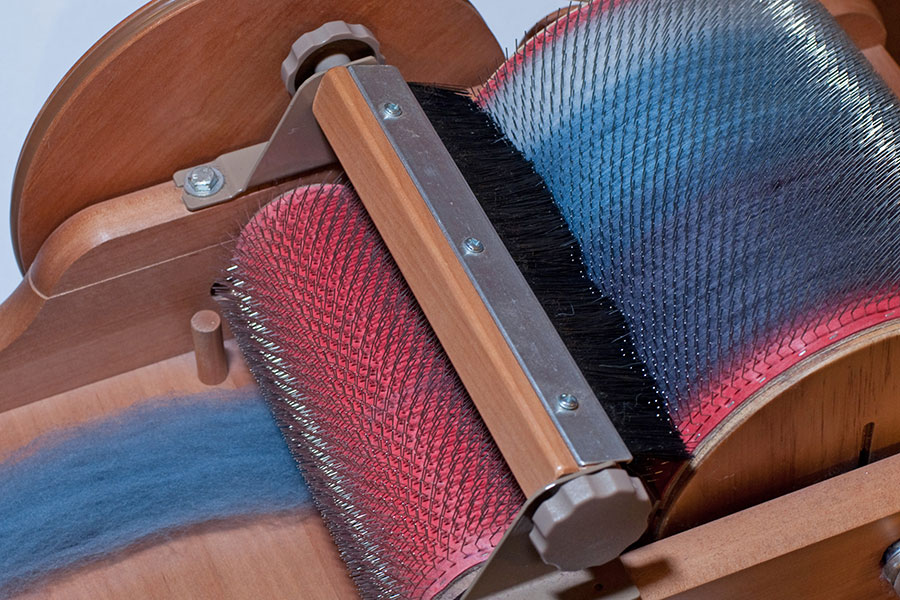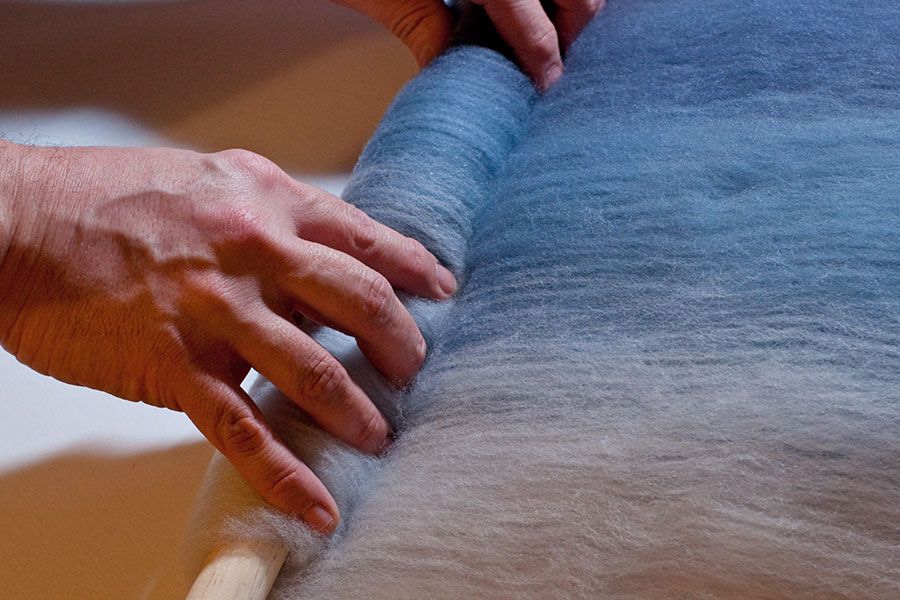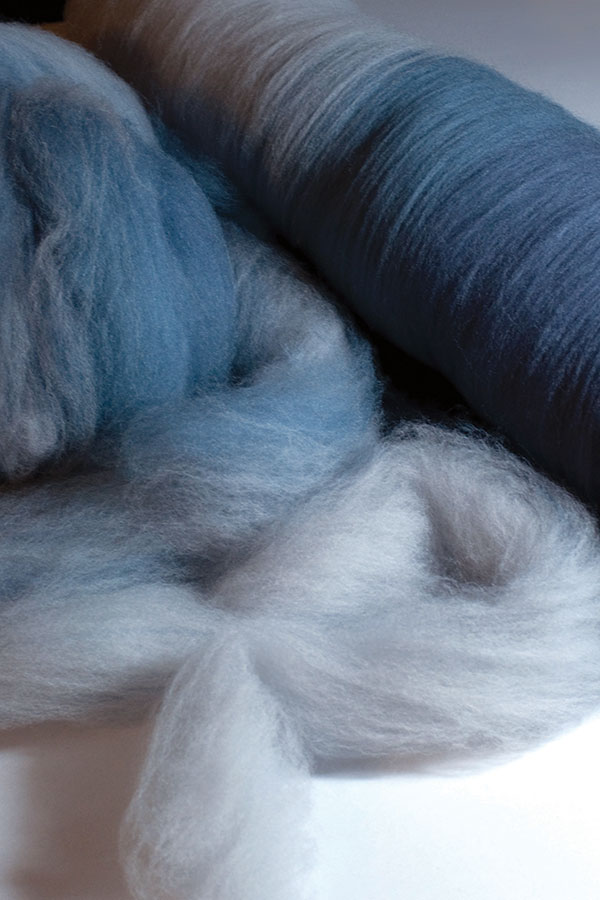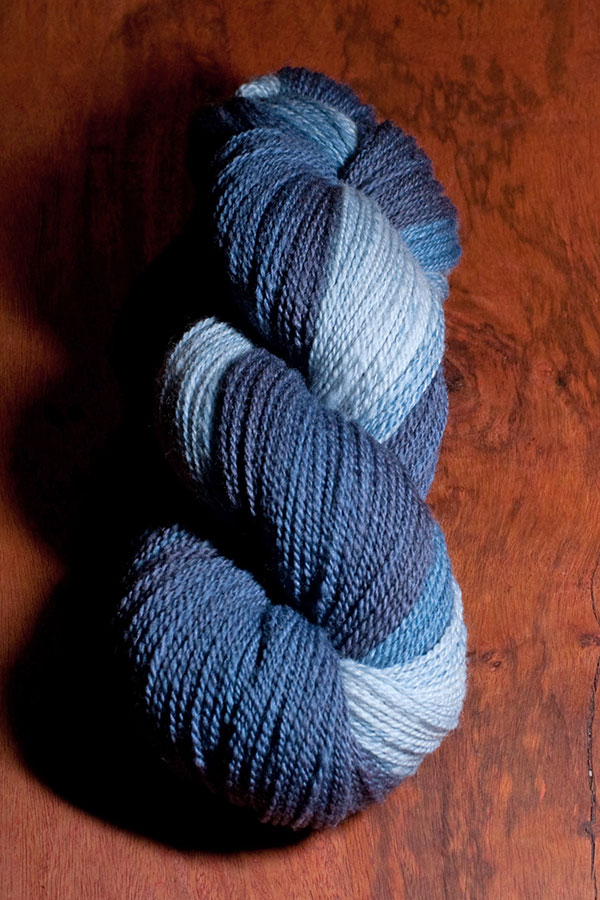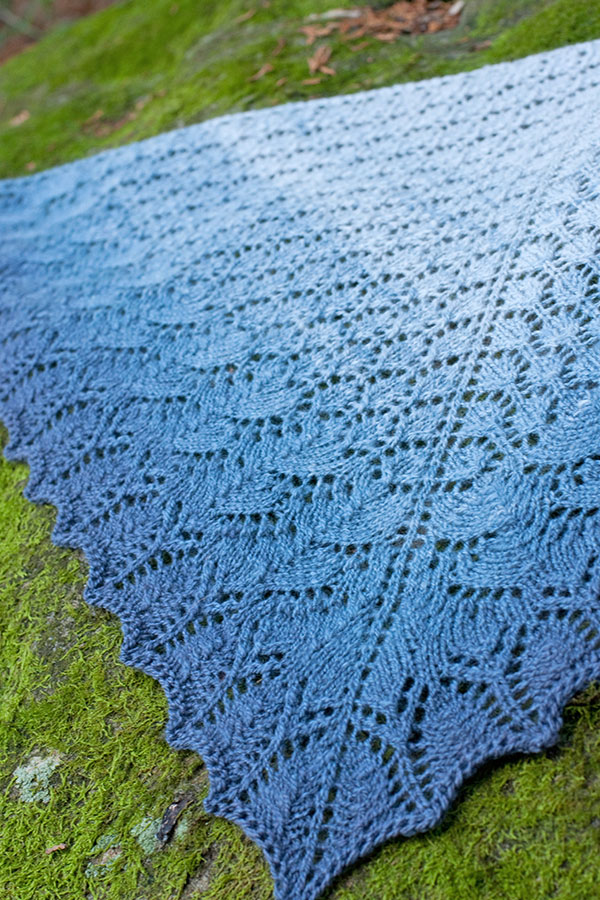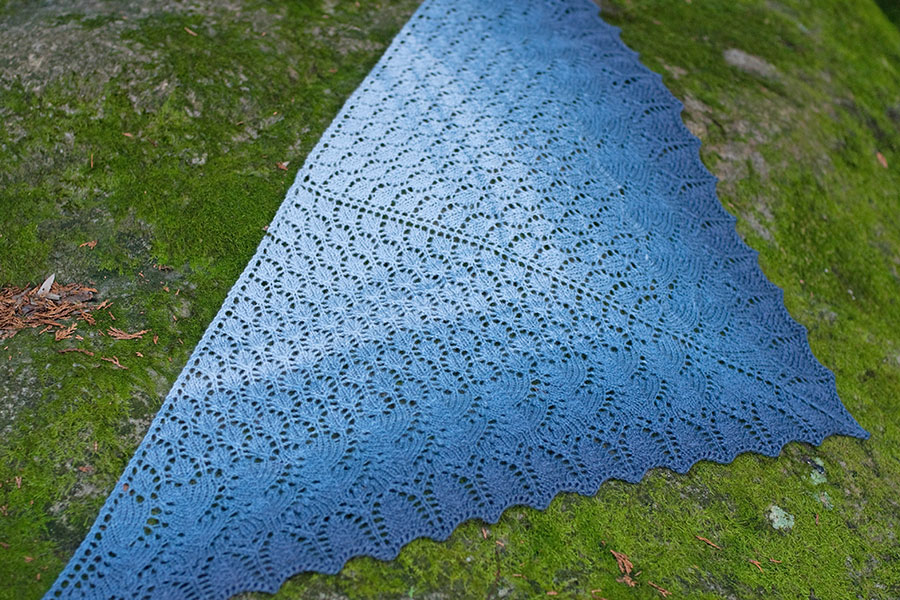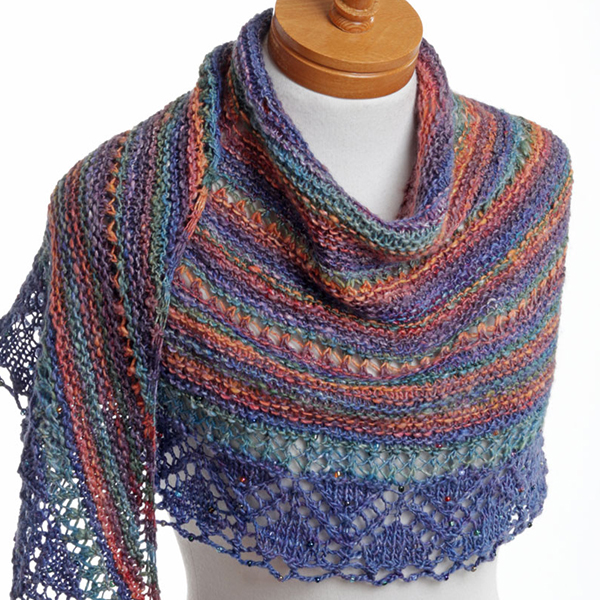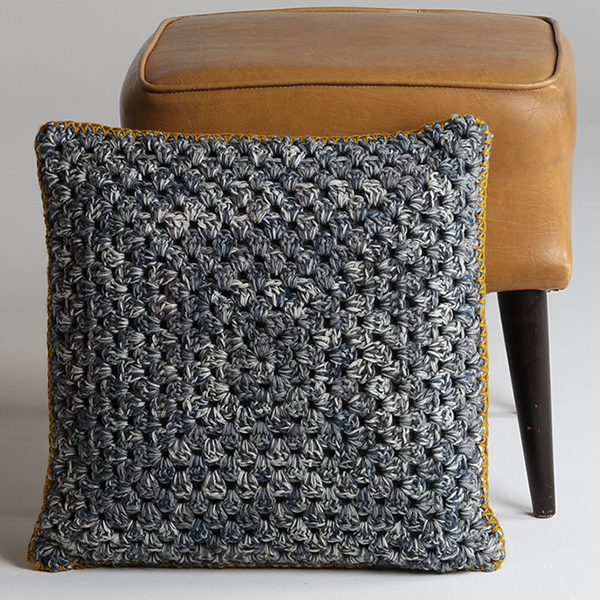
Pukaki Swallowtail Shawl
This stunning hand dyed, hand blended, hand spun shawl by David Schulz, of Southern Cross Fibre, was featured in issue 23 of The Wheel magazine. A stunning result using a simple colour progression technique. You will enjoy the results.

Pukaki Swallowtail Shawl
By David Schulz
This project will show you an easy way to dye, card and spin your own colour progression.
You can use the dye recipes provided or choose your own. Alternatively, you can blend your own colours using Ashford Merino or Corriedale Sliver on your drum carder.
You will need:
120 grams (4 ozs) undyed wool (I used Ashford Merino Sliver)
Ashford Wool Dyes (the dye recipes provided use Yellow, Red, Blue and Black)
Dyeing equipment (scales, mixing bottles, measuring spoons, eye dropper, etc.)
Drum Carder
For this project, I chose a range of muted blues from a photo I took a few years ago at Lake Pukaki, New Zealand.
The dye recipes below were mixed using 1% stock solutions. Refer to instructions HERE
Unused dye can be stored in air-tight bottles and used for future projects if you do not add the vinegar. All measurements are given in teaspoons of stock solution, except the pale silver which only needs a drop or two of blue and scarlet.
Mix the dyes using the recipes below (or mix your own!)
| Black | Yellow | Blue | Red | |
| Silver | ¼ tsp | – | 1 drop | 1 drop |
| Pale Blue | 1¾ tsp | ¼ tsp | 2 tsp | – |
| Medium Blue | 4 tsp | – | 1½ tsp | ⅛ tsp |
| Dark Blue | 7 tsp | ¼ tsp | – | – |
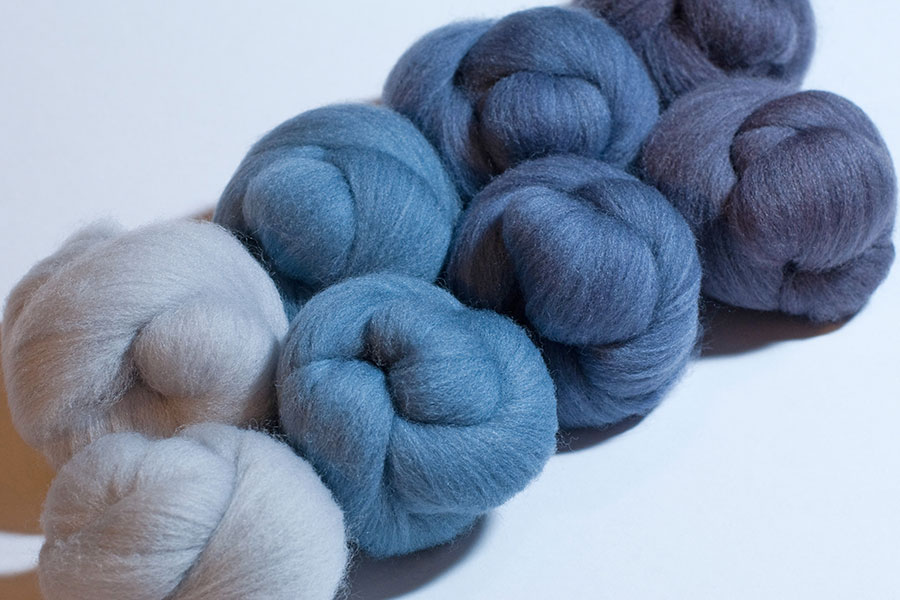
Dye 30 grams (1 oz) of wool in each of the four colours using the instructions provided with your dyes.
Card each of your colours separately on your drum carder when your fibre is dry. Divide each colour into two batts of equal weight (one batt for each thread of the 2-ply yarn we’ll spin later), giving you two sets of four batts. Put one set of the batts aside for now. Divide each of your four batts into four strips of roughly equal width. You’ll be feeding each colour into the drum carder in thin layers, working across the drum and making sure each colour overlaps the previous one. The amount of overlap will determine how much of a transition there will be between the colours in the finished yarn. An overlap of about 5cm (2ins) works well. Once you’ve finished loading the first layer, start the second layer. Unless you have a wide drum carder, you will find that your drum fills up after the second layer has been added. Remove the batt from the drum carder and start a second new one. At this point you will have two batts. Stack them on top of each other and roll them up loosely into a giant rolag. Using a smooth dowel to assist the rolling process can be helpful. Don’t roll too tightly, otherwise you may have difficulty removing the dowel and it will make drafting it out into a roving difficult. Work back and forth across the rolag and draft out into a roving. Take your time and work slowly. Hold your hands about 10cm (4 ins) apart and slowly pull the rolag apart. Move your hands along to the next section once the fibres start to move. Work back and forth in this manner until you’re happy with the thickness of the roving. Repeat this process with the second set of batts.
The yarn was spun and plied on my Ashford 30” Elizabeth set up in double drive mode to the following specifications:
Singles
Drafting Method Short Forward Draft
Wraps per Inch 44
Twists per Inch 10
Wheel Ratio used 10.5:1
Plying
Twists per Inch 7
Wheel Ratio used 13.5:1
Finished Yarn
Wraps per inch 20
Twists per inch 10
Yield 410 metres
The Swallowtail shawl pattern is available for free download from Ravelry HERE
This shawl requires 400 metres (436 yds) of yarn and is perfect for demonstrating the types of effects that can be achieved using this technique.
I hope you’ll agree after seeing the finished article that a colour progression can add a whole new dimension to a knitted object.
Colour progressions can be used for just about anything – shawls, socks, warp and weft. Let your imagination run wild.
Click to view dyeing tutorials
For detailed material safety data, full dye instructions, colour recipes and advice.

